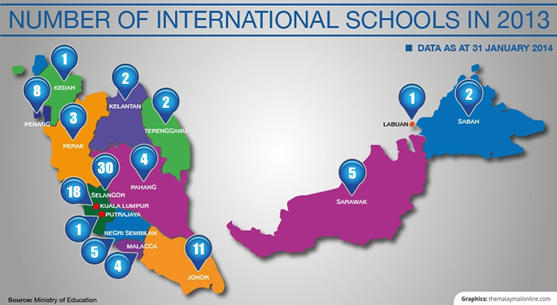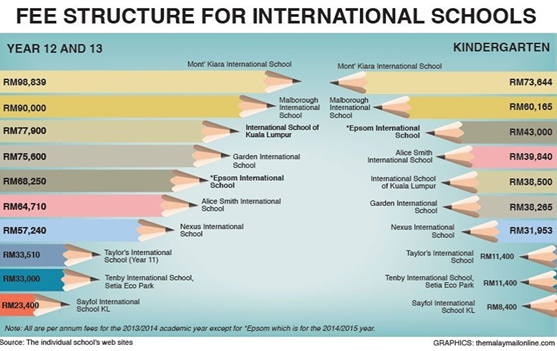It’s still half-dark at 7 a.m. in Kuala Lumpur, Malaysia.
School buses of different international schools arrive to pick up students from the condominiums of mainly foreign residential areas.
The establishment of successive international schools continues. Four years ago there were only 21 international schools in Malaysia, but today there are 99, and an additional 23 licenses have already been issued by the Ministry of Education Malaysia.
The government aims to promote Malaysia as an education hub by 2020 and as the quota of 40% local students in an international school was removed in 2010 new comers rushed to join this industry.
The government’s target is to increase the number of international schools to 87 by 2020; although this figure has already been surpassed. According to the latest announcement by the Ministry for Education in April 2014, however, the total student enrolment is only at 39,460 against a target of 75,000 students by 2020.
New Schools increase enrolment capacity, so the target of total student enrolment will probably be achieved by 2020. But I wonder what percentage of households can afford to pay such expensive fees for international schools in this country when the average wage per worker is about JPY 76,000, according to the government statistics in 2013.
International schools were originally established with the purpose of providing the equivalent education of the countries from where the overseas students came. So, students in international schools mainly consisted of overseas students (many of them receive educational support from companies) and it was an exclusive option for the rich local households. But recently, it appears that the target of various international schools is now towards local students. It’s surprising to know that, at present, Malaysian students make up 50.3% of total student enrolment.
Source: http://www.themalaymailonline.com
International schools are somewhat synonymous with expensive fees. The fee usually increases with the grade and the fee for Year 13 is about JPY 2.5 million per annum for a middle-range school and no less than JPY 1 million per annum even for lower-range schools.
Many education-minded parents are interested in an integrated system of junior high and senior high schools in today’s Japan, but these international schools generally have a system of nursery through to high school – how much is the total cost from preschool in these international schools?!
It’s said to cost at least JPY 1.5 billion (RM 30 million) to build a new international school, so it’s big business, but is this huge investment worth it?
Source: http://www.themalaymailonline.com
Malaysia is attractive to Japanese people as a place to receive an English education which is more affordable compared to the USA, England or Australia. It is this growing interest in Malaysia as an education hub that the government is aiming for.
The Japanese media often reports cases of mothers and elementary school children staying in Malaysia. But if a Japanese family moves to Malaysia and chooses an international school, the fee is much more expensive than a general private school in Japan, and almost the same as an international school in Japan, so is it really financially advantageous?
Next time, we continue with the topic of the education system and issues in Malaysia, and consider why the demand for international schools is rising.
Reported by Makiko Wada, Sugawara Institute


